La Perla de Tatama - Santuario, Risaralda - The Pearl of Tatama
When we stepped off the bus, it was overwhelming. The people, the noise of 10 different bars enticing patrons with loud and varied music. Children playing intensely at the park, while the adults sit and visit or look on. Of course, Saturday IS market day, but compared to the market day in the small pueblo where I live, there was an intensity that had my camera finger twitching in excitement.
Santuario, Risaralda
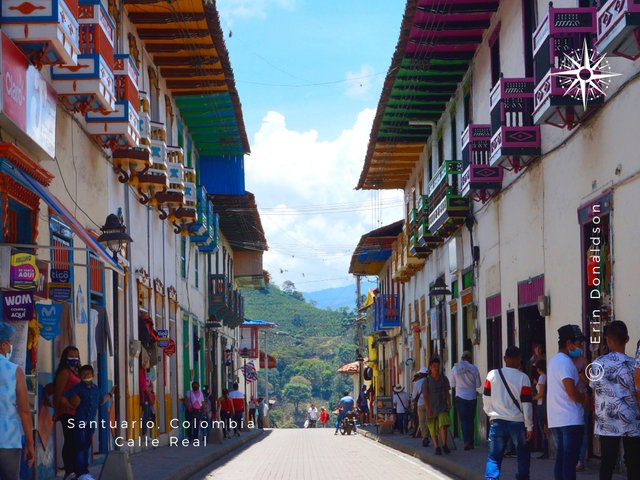
I don't travel as much as I appear to, nor as frequently as I would prefer, or as I appear to - on Social Media. That being said, I often travel for work and rarely for my own personal exploration and pleasure. Santuario was a special once-a-month treat which I try to give myself - that is going somewhere I haven't been previously.
Santuario has been on my list ever since I relocated to this part of the Coffee Axis, as it is literally on the other side, and up the side of another mountain, from where I live. Getting there however, isn't quite so easy. I can take a jeep to Apia, another jeep to La Marina, and another Jeep to Santuario. OR, I can take a bus to La Virginia, then a bus to Santuario. In the end I opted for 2 busses instead of 3 jeeps because my mom was with me, and I was thinking of her comfort.
Unique Balconies
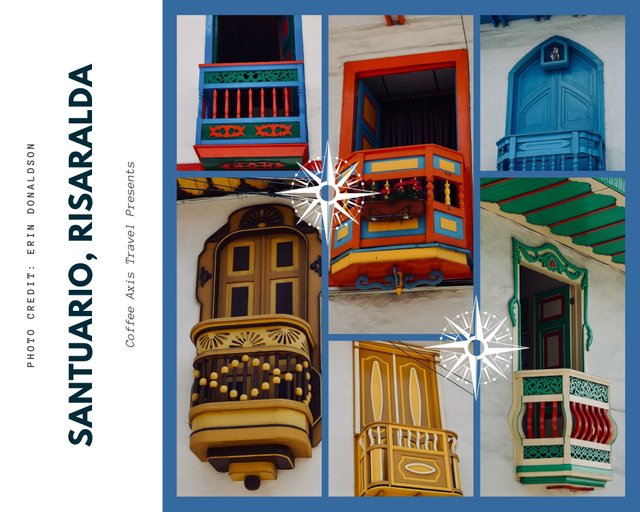
The second thing I noticed, beyond the busyness of the place, was the architecture. Every pueblo in this region is similar yet different in its own way. No two pueblos can duplicate the contours of the land, or their situation in relation to the Colombian Civil War, and traditional farm production. Both of these have an effect on local culture because some pueblos have had harsher experiences, while others had total peace.
Santuario is regionally known for the external funding which comes from Colombians in other countries sending money back as business investments, real estate investments and supporting their families. This wealth is reflected both in having the money to upkeep the old wood houses, but in also being able to afford nice finish work.
The unique balconies of Santuario reflect this in the moldings which are done on the BOTTOM of the balconies. Bystanders looking up get to enjoy the time and wood work which was invested into creating houses with an artistic appeal.
Sooo Healthy, But Bring an Escort
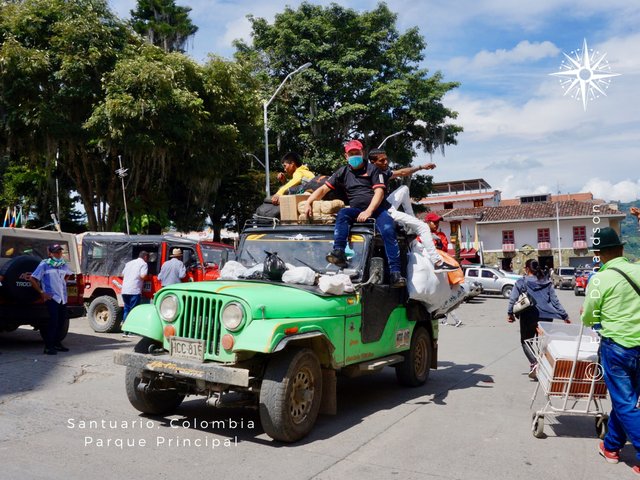
I noticed another peculiarity. People throughout our interactions had a duality in their reception of us. I was told that I needed to visit the upper part of the pueblo, for the view, the architecture, the nature - whatever, but I need to have someone with me. Everywhere we went there was this shocked attitude of "you came here alone?" - where people where quick to assure me I was safe, but yet "you really should not do 'x' alone because there is always that one case where something happens."
I took this in two ways. One, that in a culture which is very machista, women should always be accompanied, or protected. Two, that maybe there are some local security issues which can go hot for people wandering alone, or into the wrong areas.
This really didn't surprise me. The pueblos on the outer edges, are still a little crazy. This pueblo is on the mountain that divides El Choco (which is still a conflict zone), and the Department of Risaralda. Old trails can be used to spirit away anyone which might be seen as valuable to the cause. Not that I felt in danger, or at risk, but there were definitely historical precedents which cause people to err on the side of caution.
My advice to the average tourist in this situation, is to have a plan where you come, stay a night, or only a day, wander around the main plaza and surrounding blocks, enjoy a nice breakfast or lunch, then continue onward. Locals told me about a hacienda (large estate) above the pueblo which was really pleasant to visit, stay and wander in nature. This would also be a safe situation.
Santuario History
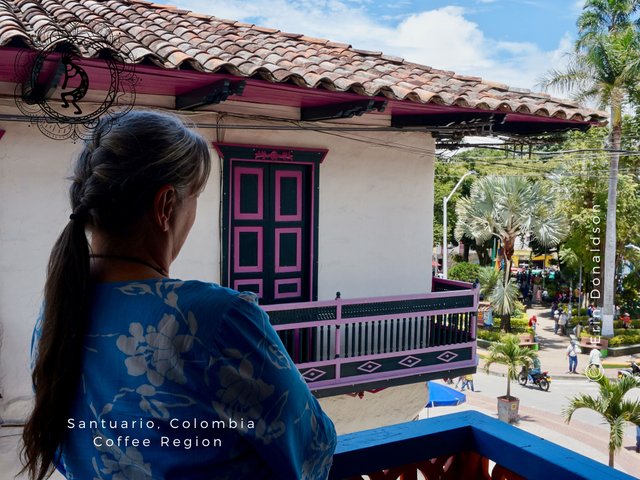
Founded in 1880, it was part of the Camino Real of the conquista, which is why there is a "Calle Real" in the pueblo itself. For the first half of Colombian history it was a part of the Cartago province, with a few farmers and local indigenous tribes. After Colombian Independence when individual departments began to exist, and Caldas was much bigger, was when the pueblo was officially founded and became a separate town versus a distant municipality.
During the civil war Santuario was a pueblo that had their own "autodefensas" or self defense militia, which morphed into a paramilitary. Locals report that the upside, was instant and swift justice for rapists, thieves and bad people. The downside was that this was vigilante justice which like many pueblos, became perverted by their own power and greed which can cause a very authoritarian or tyrannical situation.
Partially as a result of this violence, many people from Santuario began to emigrate to other countries. Today it is the pueblo with the most emigrants in all of Colombia. It is reported by locals who I met, that more than 3,000 people from Santuario live in Paris, with small colonies in New Jersy, and Virginia (in the US), plus many other parts of the world. Currently only 15,000 people live in Santuario, but it would probably have been much bigger yet poorer, had more people stayed.
A quick thanks to @steemexclusive for curating my stories! Each experience is original and written only for Steemit!
Santuario Tourism
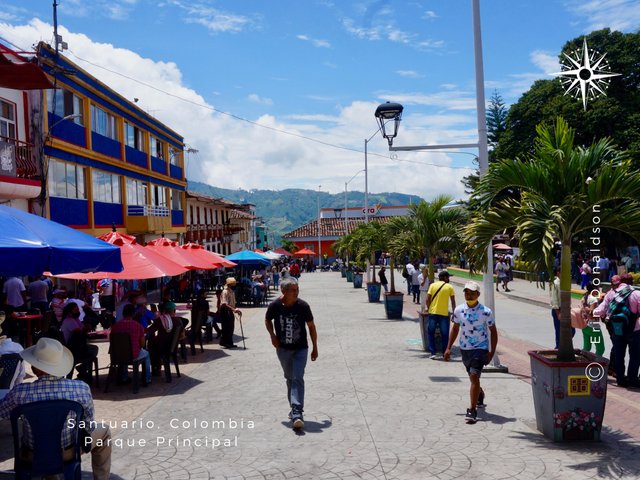
Santuario is known as The Pearl of Tatama, because it is one of only two pueblos located on this side of the slopes of a high and mysterious mountain range called "Cerro Tatama." Local culture is a rich combination of campesinos (farmers), indigenous inhabitants, and local pueblo shopkeeper and business administrators. The majority of agricultural production is coffee, plantain, and avocados.
The weather is normally more of a chilly climate with rain and clouds. Hot days are intense due to altitude. Wear a long sleeved shirt, pants and a hat. Bring a scarf for the cold, and an umbrella in case of rain. Be sure to stay hydrated and not overwork yourself walking up and down the steep hills of the town.
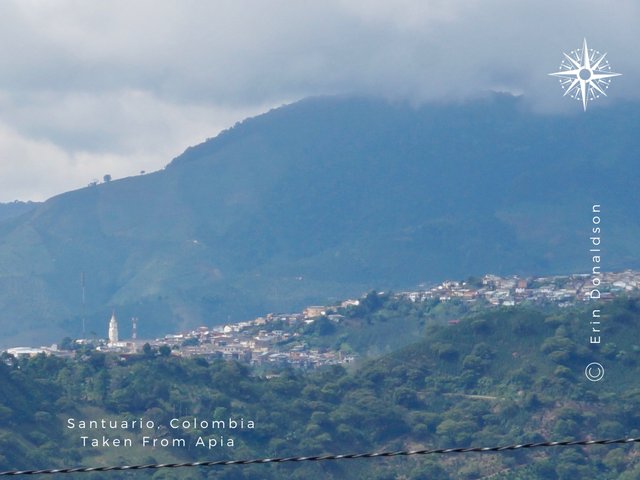
In a future visit, I hope to come back and visit this hacienda I was told about, and perhaps spend more time talking to local historians. For a tourist who wants to come here I recommend spending a day at the hacienda, and then another day in the pueblo, or coming for a day to explore the pueblo and then moving on to the next place, or returning to your point of origin. Currently, there isn't much to do, but totally worth the day trip to come, explore, relax and enjoy a change of scenery.
Based in the Coffee Axis of Colombia, Erin, an independent journalist and photographer from Reno, Nevada USA, spends her time between the cities of Manizales, and Pereira, while exploring the surrounding pueblos (or small towns) on weekends. She lives with her mother, who is also from the United States, and her son - who was born in Pereira. Her favorite things are travel, tango, tai chi, and horses! Read more about lifestyle, gastronomy tourism, and her adventures on www.coffeeaxistravel.com
Hola Erin, sin duda es un lugar muy bonito, las ventanas son muy llamativas, las he visto en algunos pueblos de Antioquia, sin duda invitan a fotografiarlas, amo los pueblos y tu con esas fotos me invitas a conocer el eje cafetero.
Saludos.
Estas muy bienvenida! Me encanta toda la belleza que este region tiene. Ya que llevo 8 anos en 2 ciudades y un pueblo de este region, y hasta que mas me gusta el parte. Muy contenta!